As we delve into the world of professional gaufriers, it’s fascinating to observe the evolution and innovation that has shaped this niche market. From traditional waffle irons to high-tech appliances, the gaufrier industry has seen a remarkable transformation. Today, we’ll explore the challenges, opportunities, and the dynamic landscape that drives success in the realm of gaufrier OEM. Join us as we uncover the stories behind the success, the trends that are shaping the future, and the strategies that are propelling key players to the forefront.
Introduction to Professional Gaufrier Market in Europe and America
The professional gaufrier market in Europe and America has long been a hub of innovation and demand for high-quality bakery equipment. These regions, with their diverse culinary cultures and sophisticated tastes, have set the stage for a dynamic and evolving market. In this sector, professional gaufriers—those versatile, Belgian waffle makers—have found a niche that is both unique and sought after.
Gaufriers, with their distinctive patterns and golden-brown waffles, have become a staple in cafes, restaurants, and bakeries across Europe and America. The market for these specialized appliances is not just about the product itself; it’s about the experience it delivers. From the rich texture of the waffle to the aroma that fills the air, professional gaufriers have become synonymous with quality and tradition.
In Europe, the market is particularly vibrant. Countries like Belgium, France, and the Netherlands have a deep-rooted appreciation for waffles, and this has fueled the demand for professional-grade gaufriers. These appliances are not just for commercial use; they have also found their way into homes of culinary enthusiasts who enjoy the art of making perfect waffles.
On the other side of the Atlantic, the American market has its own set of dynamics. The United States has a love affair with all things sweet and indulgent, and this extends to waffles as well. The rise of gourmet cafes and food trucks has created a niche market for high-quality gaufriers that can produce the kind of waffles that are both visually appealing and delicious.
The professional gaufrier market in Europe and America is characterized by a few key factors. Firstly, there is a strong emphasis on design and functionality. Manufacturers are not just producing appliances; they are crafting tools that can enhance the culinary experience. The aesthetics of these gaufriers are as important as their performance.
Secondly, the market is segmented into various categories based on the type of waffle produced. Some gaufriers are designed for classic Belgian waffles, while others can make American-style waffles with a thicker, heartier texture. This segmentation allows businesses to cater to specific customer preferences and market trends.
Moreover, the market is influenced by technological advancements. Modern gaufriers come with features like adjustable temperature controls, non-stick surfaces, and even digital interfaces that make them easier to use and maintain. These innovations have not only improved the quality of the waffles but have also made the appliances more accessible to a broader audience.
Another important aspect of the professional gaufrier market is the role of OEM (Original Equipment Manufacturer) partnerships. Many small and medium-sized businesses rely on OEMs to provide custom-made gaufriers that meet their specific needs. These partnerships allow for greater flexibility and customization, which is crucial in a market that values uniqueness and quality.
In Europe, the market is also shaped by regulations and standards that ensure the safety and quality of the appliances. Compliance with these regulations is a non-negotiable requirement for manufacturers looking to enter the market.
In America, the market is driven by consumer demand for specialty foods and experiences. The rise of foodie culture has led to an increased interest in artisanal and gourmet products, including handcrafted waffles. This demand has spurred innovation and has opened up new opportunities for gaufrier manufacturers.
Despite the growth and potential, the professional gaufrier market in Europe and America faces challenges. Competition is fierce, and the market is highly fragmented. Manufacturers must continuously innovate to stay ahead of the curve and meet the evolving needs of consumers.
In conclusion, the professional gaufrier market in Europe and America is a testament to the power of culinary tradition and innovation. It’s a market where every detail counts, from the design of the appliance to the quality of the waffle it produces. As the market continues to grow and evolve, it will be interesting to see how manufacturers navigate the challenges and capitalize on the opportunities that lie ahead.
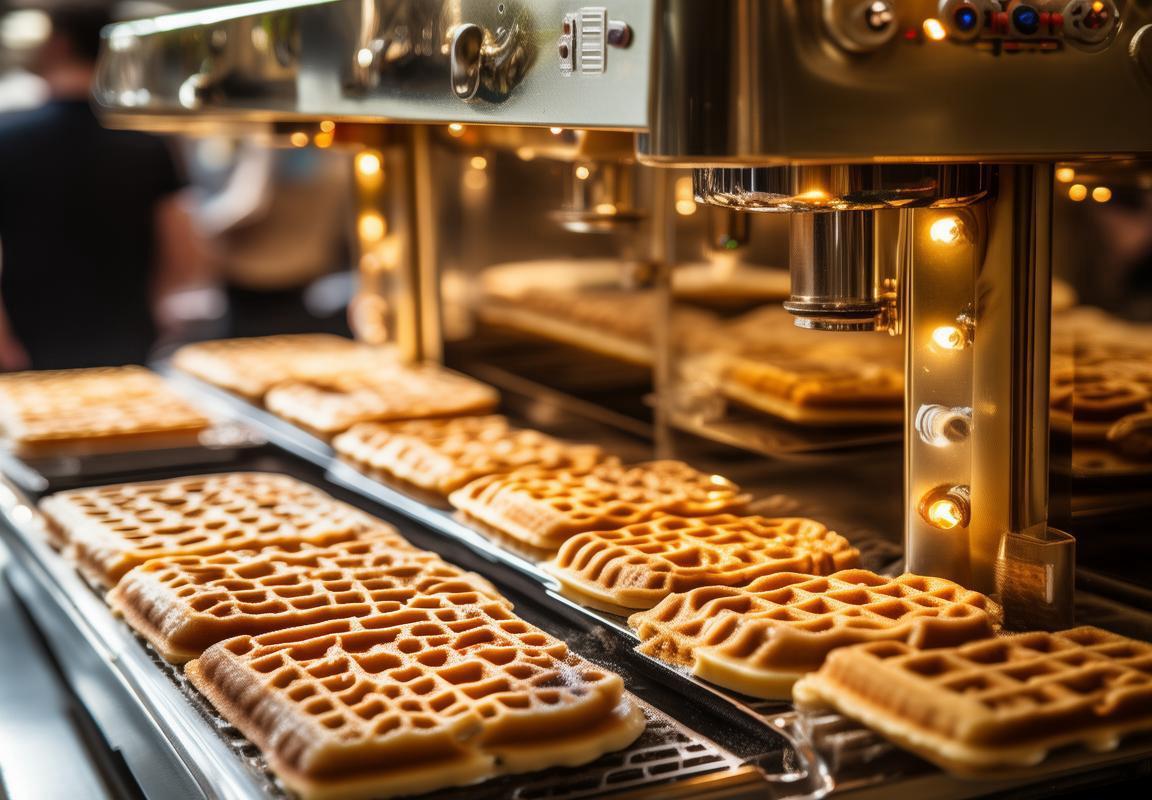
Understanding the Gaufrier OEM Landscape
In the ever-evolving culinary landscape of Europe and America, the gaufrier, or waffle iron, has become a staple in professional kitchens. This specialized appliance has garnered significant attention from Original Equipment Manufacturers (OEMs) looking to cater to the unique needs of chefs and bakers. Understanding the gaufrier OEM landscape requires a deep dive into the intricacies of this niche market.
The gaufrier OEM market is characterized by a select group of manufacturers who specialize in crafting high-quality, durable waffle irons. These OEMs often work closely with branded companies to produce custom-designed waffle makers that align with specific product lines and branding strategies. The collaboration between OEMs and end-users is a critical component of the market’s dynamic nature.
One key aspect of the gaufrier OEM landscape is the emphasis on innovation. OEMs are constantly pushing the boundaries of what is possible with waffle irons, incorporating advanced features such as non-stick surfaces, adjustable heat settings, and even digital controls. These innovations not only enhance the user experience but also open up new possibilities for culinary creativity in professional settings.
The selection of materials is another crucial factor in the gaufrier OEM market. High-grade stainless steel, durable aluminum, and heavy-duty cast iron are commonly used to ensure that the waffle irons can withstand the rigors of commercial use. OEMs must balance cost-effectiveness with the need for longevity and reliability, which is essential for maintaining a professional kitchen’s efficiency.
Customization is a hallmark of the gaufrier OEM market. Many OEMs offer tailored solutions, allowing customers to specify the size, shape, and design of their waffle irons. This level of personalization is particularly appealing to bakeries and restaurants that want to offer a unique product that stands out in the market. It also provides an opportunity for OEMs to differentiate themselves from competitors.
Quality control is paramount in the gaufrier OEM landscape. The reputation of an OEM is often tied to the performance and durability of their products. As such, stringent quality assurance protocols are in place to ensure that every waffle iron meets the highest standards. This includes rigorous testing of materials, assembly processes, and final product functionality.
The distribution channels in the gaufrier OEM market are varied and often include direct sales to end-users, as well as partnerships with distributors and retailers. OEMs must navigate complex supply chains to ensure that their products are available where they are needed most. This often requires a nuanced understanding of local market dynamics and distribution logistics.
One significant trend in the gaufrier OEM market is the growing emphasis on sustainability. As environmental concerns continue to rise, OEMs are exploring eco-friendly materials and manufacturing processes. This not only aligns with the values of many consumers but also offers a competitive advantage for those who can market their products as environmentally responsible.
The competition within the gaufrier OEM market is fierce, with established players vying for market share alongside emerging brands. This competition drives innovation and encourages OEMs to continually refine their products and services. Collaborations with research and development teams, as well as strategic partnerships with raw material suppliers, are common strategies used to stay ahead of the curve.
The gaufrier OEM landscape is also influenced by regulatory requirements. Different regions have varying standards for electrical safety, material composition, and labeling. OEMs must stay abreast of these regulations to ensure compliance and avoid costly legal issues.
In conclusion, the gaufrier OEM landscape is a complex and nuanced market. It demands a high level of expertise in product design, material selection, quality control, and distribution. As the culinary industry continues to evolve, so too will the demands placed on OEMs to deliver cutting-edge waffle irons that meet the needs of professional kitchens around the world.
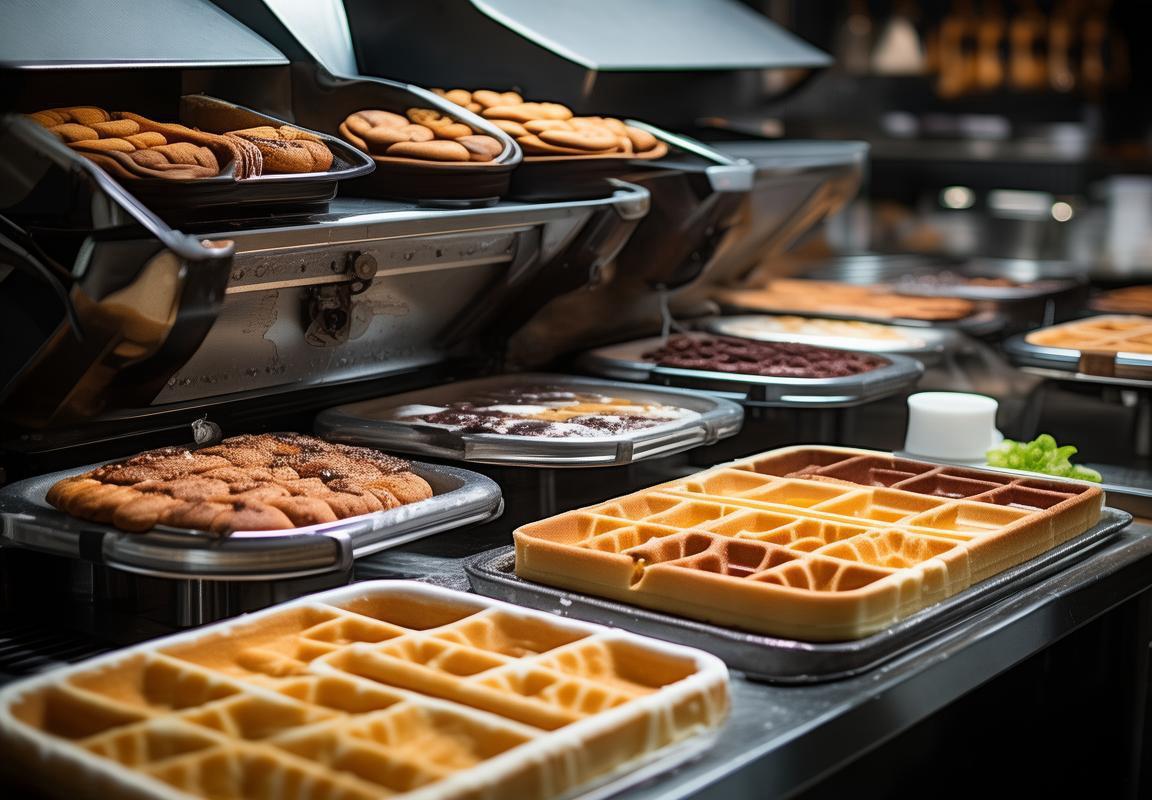
Market Dynamics and Trends
The professional gaufrier market in Europe and America is shaped by a dynamic interplay of factors that influence its growth, evolution, and consumer preferences. Here’s an exploration of the key dynamics and trends currently at play:
-
Consumer Demand Shifts: There’s a noticeable shift in consumer demand, with a growing emphasis on health and wellness. Consumers are increasingly seeking out kitchen appliances that not only enhance their culinary experiences but also align with their health-conscious lifestyles.
-
Technological Integration: The integration of smart technology in gaufriers is becoming more prevalent. Features like touch screens, Wi-Fi connectivity, and customizable settings are becoming standard, offering users greater control and convenience.
-
Sustainability Focus: Sustainability is a significant driver in the market. OEMs are responding by producing gaufriers with energy-efficient designs, eco-friendly materials, and recyclable components to cater to environmentally conscious consumers.
-
Health and Wellness Trends: The surge in popularity of Belgian waffles, as well as other breakfast pastries, has directly impacted the gaufrier market. There’s a trend towards healthier variations, such as gluten-free, low-carb, and high-protein waffles, which are driving the need for versatile and multi-functional appliances.
-
Customization and Personalization: Consumers are looking for more personalized experiences, which is prompting OEMs to offer a wider range of gaufrier models with different shapes, sizes, and design options. Customization extends to the ability to create unique patterns and textures on waffles.
-
Market Segmentation: The market is becoming more segmented, with different demographics and consumer groups showing distinct preferences. For instance, there’s a niche market for professional-grade gaufriers in the foodservice industry, while home consumers might prefer compact, countertop models.
-
Globalization of Flavors: As culinary trends become more globalized, there’s an increasing interest in international flavors. This is prompting OEMs to design gaufriers that can produce a variety of waffle types, from traditional Belgian to American-style, and even international versions like Indian gulab jamun waffles.
-
E-commerce Influence: The rise of e-commerce has had a profound impact on the gaufrier market. Online sales platforms have expanded the reach of OEMs, allowing them to tap into new markets and consumer segments. Additionally, e-commerce has facilitated direct-to-consumer sales, giving manufacturers more control over pricing and distribution.
-
Competitive Landscape: The competition within the gaufrier OEM market is fierce, with established brands vying for market share against emerging players. This competition drives innovation and product development, as companies strive to differentiate themselves through unique features and superior quality.
-
Regulatory Compliance: Compliance with safety and quality standards is critical in the gaufrier market. OEMs must ensure that their products meet the stringent regulations of both Europe and America, which can vary significantly from one region to another.
-
Economic Factors: Economic conditions, such as fluctuations in currency exchange rates and changes in disposable income, can influence the demand for gaufriers. During economic downturns, consumers may opt for more affordable models, while in prosperous times, they might be more willing to invest in premium appliances.
-
Marketing and Branding Strategies: Effective marketing and branding are crucial for OEMs to stand out in a crowded market. Social media campaigns, influencer partnerships, and targeted advertising are becoming key strategies for attracting and retaining customers.
-
Product Lifecycle Management: The lifecycle of a gaufrier product is becoming shorter, with frequent updates and new model releases. OEMs must manage their product lifecycle effectively to keep up with the fast pace of innovation and consumer expectations.
-
Customer Service and Support: As the market evolves, customer service and support are becoming more important. OEMs that offer excellent after-sales service can build customer loyalty and gain a competitive edge.
-
Innovation in Materials: There’s a trend towards using innovative materials in gaufrier construction, such as non-stick coatings that are more durable and environmentally friendly, and materials that can withstand higher temperatures without warping or discoloration.

Key Players and Market Share
In the competitive landscape of the professional gaufrier market, several key players have emerged as leaders, each bringing their unique strengths and innovative products to the forefront. Understanding their market share and the dynamics of their presence is crucial for any stakeholder in the industry.
One prominent player is Breville, an Australian brand known for its high-quality kitchen appliances. With a strong presence in both Europe and America, Breville has managed to secure a significant market share by focusing on sleek design and superior performance. Their gaufriers, known for their ease of use and consistent results, have captured the attention of both professional chefs and home bakers.
Another major player is Gourmia, a company that has made a name for itself with its wide range of kitchen gadgets, including professional-grade gaufriers. Gourmia’s market share is bolstered by its aggressive marketing and competitive pricing, which has allowed the brand to gain a substantial following among budget-conscious consumers.
Cuisinart, a household name in the United States, has also made significant inroads in the professional gaufrier market. The brand’s reputation for durability and reliability has helped it maintain a strong market share. Cuisinart’s gaufriers are often found in commercial kitchens and home bakeries alike, thanks to their robust construction and consistent performance.
KitchenAid, another American staple, has leveraged its brand recognition to capture a significant slice of the professional gaufrier market. Known for its kitchen appliances that blend functionality with style, KitchenAid has created a niche for itself among culinary professionals and enthusiasts. Their gaufriers, which are often part of larger product lines that include mixers and toasters, offer a cohesive and efficient kitchen experience.
In Europe, Magimix is a brand that has long been associated with high-end kitchen appliances, and their gaufriers are no exception. The brand’s commitment to innovation and premium materials has allowed them to maintain a strong market share. Magimix’s gaufriers are often favored by professional chefs for their ability to produce consistently perfect waffles, which is a testament to the brand’s quality and reliability.
In the world of professional gaufriers, it’s not just about the brands; it’s also about the distribution channels and partnerships that these key players have forged. For instance, Breville has a global distribution network that allows them to reach customers in various markets, while Gourmia has strategically positioned itself in online marketplaces, making their products easily accessible to a broad consumer base.
Cuisinart’s market share is also influenced by their strong relationships with retailers, who often feature their products in “best of” lists and kitchen gadget collections. KitchenAid, on the other hand, has benefited from its partnership with major kitchen and home goods retailers, which have helped to showcase their gaufriers in prominent locations.
Magimix’s success in Europe is partially due to their exclusive partnerships with high-end kitchen stores and gourmet markets, where their premium gaufriers are often showcased alongside other luxury kitchenware. These partnerships not only enhance the brand’s image but also contribute to their market share.
The market share of these key players is also shaped by consumer preferences and trends. For example, as the demand for healthier and homemade breakfast options continues to rise, brands like Breville and Gourmia are well-positioned to capitalize on this trend with their user-friendly gaufriers. Similarly, as the foodservice industry grows, professional-grade gaufriers that can withstand heavy use and produce commercial-quality waffles are in high demand.
In terms of market share distribution, it’s clear that the professional gaufrier market is quite fragmented, with no single brand dominating the industry. Instead, it’s a diverse group of players, each with their own strengths and strategies, that collectively drive the market forward.
The rise of niche brands has also had an impact on the market share dynamics. Smaller, specialized brands that focus on unique features or target specific customer segments are increasingly carving out their own spaces within the market. This trend is not only challenging the big players but also providing consumers with a wider array of choices.
In conclusion, the key players in the professional gaufrier market have various strategies and partnerships that contribute to their market share. From established brands like Breville and Cuisinart to emerging players like Gourmia and Magimix, each brings something distinct to the table. As consumer preferences and industry trends continue to evolve, so too will the market share distribution among these key players.
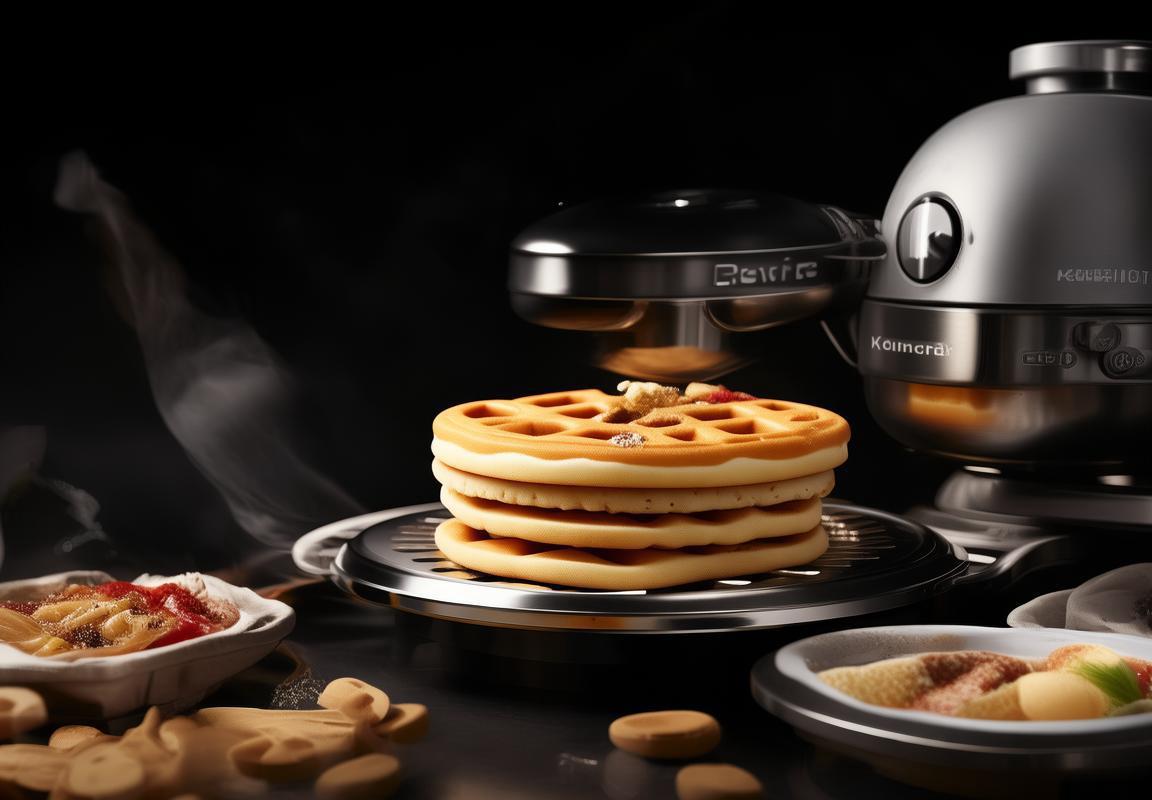
Consumer Preferences and Demographics
In the ever-evolving landscape of the gaufrier market, consumer preferences and demographics play a pivotal role in shaping the direction and success of brands. Understanding these factors is crucial for OEMs looking to capitalize on emerging trends and meet the demands of their target audience.
Gaufriers, once a niche product, have seen a surge in popularity, especially in Europe and America, where the demand for unique and gourmet baked goods continues to grow. One key demographic that has been driving this trend is the younger generation, often referred to as Millennials and Gen Z, who are known for their adventurous palates and preference for artisanal and health-conscious products.
These consumers are not only interested in the taste of the gaufriers but also in the quality of the ingredients and the sustainability practices of the brands they support. Organic and non-GMO ingredients are becoming increasingly important, as are eco-friendly packaging options that align with their environmental consciousness.
The demographic of home bakers and culinary enthusiasts is also on the rise, with many opting for professional-grade appliances like the gaufrier to elevate their home baking experience. This group values the precision and versatility that professional-grade appliances offer, allowing them to experiment with different recipes and techniques.
In Europe, there’s a significant emphasis on traditional flavors and methods, with consumers often seeking out gaufriers that can recreate classic recipes. This preference for tradition is reflected in the popularity of Belgian waffles and French crêpes, which are often associated with leisurely meals and social gatherings.
On the other hand, in America, there’s a blend of tradition and innovation, with consumers showing a penchant for unique flavors and styles. The American market has embraced the gaufrier as a versatile appliance that can be used to make not just the traditional waffles and crêpes but also a variety of other treats, including savory options and even gluten-free and vegan versions.
In terms of price sensitivity, while there is a segment of consumers willing to invest in high-end, luxury gaufriers, there’s also a growing number who are looking for affordable, yet quality options. This dual demand requires OEMs to offer a range of products that cater to different budgets and expectations.
When it comes to purchasing behavior, online sales have seen a considerable increase, with consumers turning to e-commerce platforms for convenience and the ability to compare a wide range of options. Social media also plays a significant role in shaping consumer preferences, as influencers and food bloggers often showcase their waffle and crêpe creations, influencing what’s trendy and sought after.
Geographic preferences also come into play, with certain regions showing a higher demand for specific types of gaufriers. For instance, coastal areas may prefer appliances that offer a wider variety of waffle shapes and sizes, while urban centers might lean towards compact, space-saving designs.
In the world of gaufriers, the demographic and consumer preference landscape is complex and multifaceted. OEMs that can tap into these nuances and adapt their product offerings to meet the diverse needs and tastes of consumers will be well-positioned to succeed in this dynamic market. From the choice of materials to the inclusion of advanced features, every aspect of the gaufrier’s design and functionality is scrutinized by today’s discerning consumers, who are more informed and engaged than ever before. This level of attention to detail is what sets the leading brands apart and ensures their products resonate with the evolving preferences of the consumer base.

Technological Advancements
In the ever-evolving landscape of kitchen appliances, technological advancements have been reshaping the market, particularly in the realm of professional gaufriers. From features to energy efficiency, here’s a glimpse into how technology is transforming the industry.
Modern gaufriers are no longer just about creating delicate waffles; they are now equipped with features that cater to the demands of a more sophisticated consumer base. One significant technological leap is the integration of touchscreens, which offer intuitive controls and a sleek aesthetic. Users can now program their preferred settings with ease, ensuring consistency in the waffle-making process.
The inclusion of smart technology has been a game-changer. Many professional gaufriers now come with Wi-Fi connectivity, allowing for remote operation and monitoring. This is particularly beneficial for businesses that operate on tight schedules or need to manage multiple appliances from a central location. The ability to adjust temperature and cooking times remotely adds a layer of convenience and efficiency.
Energy efficiency has become a cornerstone of technological advancements in the gaufrier market. With environmental concerns on the rise, manufacturers are focusing on developing appliances that consume less energy without compromising on performance. This has led to the introduction of innovative heating elements that provide faster and more consistent cooking times while using less power.
The design of gaufriers has also seen a transformation, with a focus on ease of maintenance and durability. Non-stick surfaces are now the norm, reducing the need for butter or oil and making cleanup a breeze. Moreover, the materials used in construction are more robust, ensuring that the appliances can withstand heavy use in commercial settings.
Innovation isn’t just limited to the internal workings of the appliances. The exterior design has also evolved to cater to various aesthetics. Modern gaufriers come in a range of colors and finishes, allowing businesses to match their appliances to their branding or kitchen decor. This attention to design not only enhances the visual appeal but also contributes to the overall user experience.
Another area where technology has made a significant impact is in the realm of safety features. Modern gaufriers are equipped with safety locks, automatic shut-offs, and temperature controls that prevent overheating. These features are crucial in a commercial environment where accidents can lead to downtime and potential harm.
In terms of customization, some gaufriers now offer adjustable plates that can accommodate different sizes of waffles, from classic Belgian to thinner American styles. This versatility allows users to cater to a wider range of preferences and dietary requirements.
The rise of health consciousness has also influenced technological advancements in the gaufrier market. Manufacturers are now exploring ways to create healthier waffles by reducing the need for excessive fats. Some models are designed to cook waffles with minimal oil or even without it, appealing to consumers who are looking for lighter, lower-calorie options.
Lastly, the integration of IoT (Internet of Things) has opened up new possibilities for data collection and analysis. Gaufriers with IoT capabilities can provide valuable insights into usage patterns, helping businesses optimize their operations and inventory management.
Overall, technological advancements in the gaufrier market are driving innovation, efficiency, and convenience. As consumers and businesses alike seek out appliances that offer more functionality and adaptability, the industry is poised to continue evolving, bringing new and exciting features to the forefront.
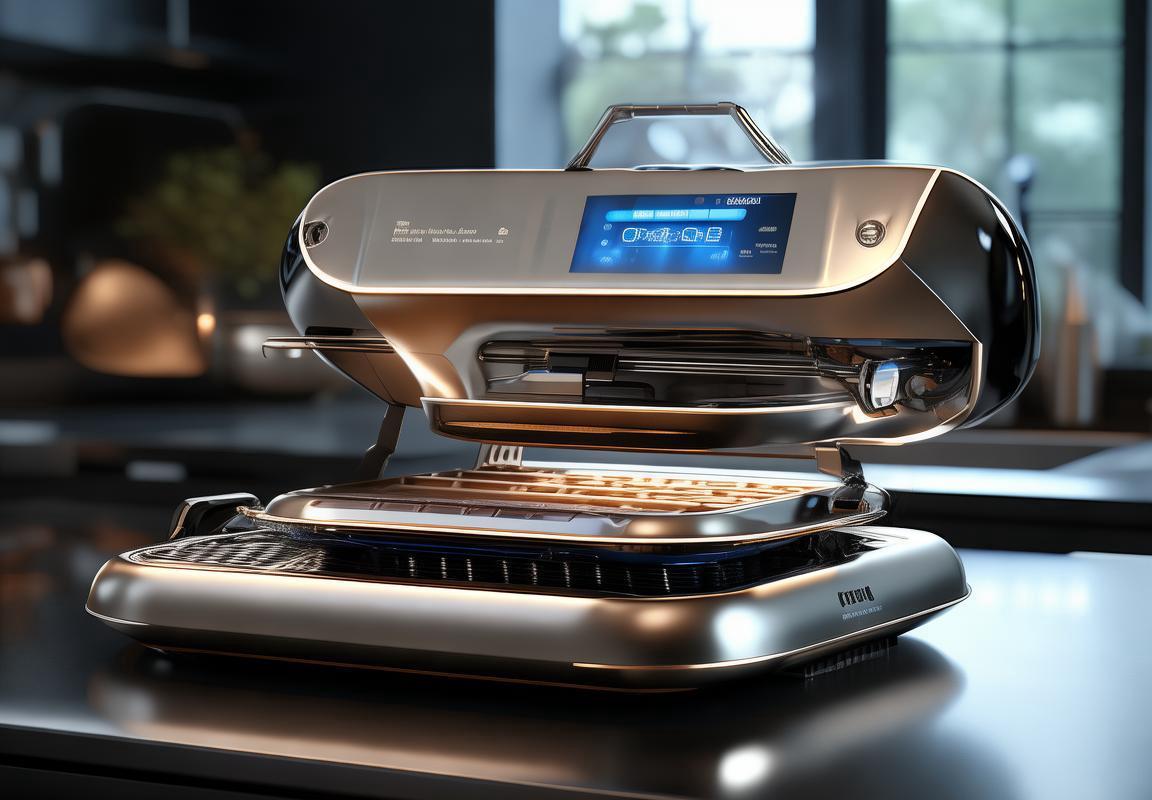
Distribution Channels and Sales Strategies
In the competitive landscape of the professional gaufrier market, the effectiveness of distribution channels and sales strategies plays a pivotal role in reaching and satisfying customers. Here’s an exploration of how these aspects shape the industry:
Growth in Online Retail PlatformsOnline retail has seen a significant surge, with more consumers turning to e-commerce for their purchasing needs. Gaufrier manufacturers are capitalizing on this trend by establishing strong online presences, offering direct-to-consumer sales through their websites and leveraging popular online marketplaces. This direct engagement allows for better customer insights and personalized marketing.
Strategic Partnerships with Local RetailersTo bridge the gap between online and physical shopping experiences, many gaufrier OEMs are forming strategic partnerships with local retailers. These collaborations enable them to maintain a physical presence while also reaching customers who prefer in-store shopping. By aligning with well-known and trusted brands, OEMs can enhance their brand visibility and credibility.
Specialized Distribution NetworksFor professional-grade gaufriers, specialized distribution networks are crucial. These networks are tailored to reach specific markets, such as hotels, restaurants, and catering services. Distributors and wholesalers that understand the unique needs of these sectors can ensure that the right products are delivered to the right customers, often with additional value-added services like installation and maintenance support.
Social Media and Influencer MarketingSocial media has become a powerful tool for reaching consumers. Gaufrier OEMs are using platforms like Instagram, Facebook, and YouTube to showcase their products through engaging content, influencer partnerships, and user-generated reviews. This approach not only promotes brand awareness but also fosters a community around the product, encouraging word-of-mouth referrals.
Direct Sales TeamsIn certain markets, direct sales teams are employed to build relationships with key accounts. These teams are trained to understand the nuances of the professional gaufrier market and can provide personalized solutions to customers. By offering consultations and demonstrations, they can address specific customer needs and provide a more tailored sales experience.
Sales Promotions and IncentivesSales promotions and incentives are a common strategy to boost sales. OEMs may offer discounts, bundle deals, or loyalty programs to encourage purchases. These tactics are particularly effective during peak sales seasons or when introducing new models or features that require a push to gain market traction.
Trade Shows and ExposParticipation in trade shows and expos is a traditional yet effective sales strategy. These events provide a platform for OEMs to showcase their latest products, network with potential customers, and gather valuable market intelligence. By having a strong presence at these events, companies can position themselves as industry leaders and gain exposure to a wider audience.
Cross-Selling and UpsellingCross-selling and upselling are sales techniques that can significantly impact revenue. By offering complementary products or more advanced models, sales teams can increase the average transaction value. This approach requires a deep understanding of the customer’s needs and the ability to articulate the added value of the higher-end options.
Customer Feedback and Continuous ImprovementListening to customer feedback is crucial for refining sales strategies. OEMs that actively collect and analyze customer data can identify trends and areas for improvement. This feedback loop allows for the continuous enhancement of products, services, and sales approaches, ensuring that the company remains aligned with customer expectations.
In summary, the distribution channels and sales strategies employed by gaufrier OEMs are multifaceted, encompassing both traditional and innovative approaches. By leveraging online platforms, forming strategic partnerships, utilizing social media, and focusing on customer satisfaction, these companies are able to navigate the complexities of the market and drive sales growth.

Challenges and Opportunities
The competitive landscape of the gaufrier market is rife with challenges and opportunities that shape the strategies and futures of manufacturers and distributors alike. Navigating these complexities requires a keen understanding of the current state of the market.
Gauging Consumer Demand FluctuationsConsumer demand for gaufriers can be unpredictable, often influenced by seasonal trends, cultural shifts, and economic conditions. For instance, during festive seasons, there’s a surge in demand for decorative and novelty gaufriers, while during economic downturns, consumers might prioritize more affordable models.
The Rise of Online RetailThe advent of e-commerce has significantly altered the distribution channels for gaufriers. Online sales platforms have expanded the reach of manufacturers and distributors, allowing them to tap into global markets. However, this shift also means that brick-and-mortar retailers must adapt by offering a unique in-store experience to compete.
Supply Chain DisruptionsSupply chain disruptions, whether due to trade wars, pandemics, or other geopolitical events, can have a profound impact on the gaufrier market. These disruptions can lead to delays in production, increased costs, and shortages of key components, all of which can affect sales and market share.
Sustainability and Eco-Friendly PracticesConsumers are increasingly concerned about the environmental impact of their purchases. This shift has led to a growing demand for gaufriers made with sustainable materials and eco-friendly production methods. Companies that can demonstrate their commitment to sustainability often find a competitive edge in the market.
Regulatory ComplianceNavigating the complex web of regulations is a challenge for gaufrier manufacturers and distributors. Different regions have varying standards for product safety, labeling, and emissions. Staying compliant requires ongoing vigilance and investment in legal expertise.
Technological IntegrationThe integration of technology into gaufrier design and functionality is a significant opportunity. Smart features, such as Wi-Fi connectivity and recipe customization, are becoming more popular. However, this technological advancement also requires companies to invest in research and development to keep up with consumer expectations.
Competitive Pricing StrategiesPricing is a delicate balance. Offering competitive prices can attract more customers, but it can also put pressure on profit margins. Companies must find a pricing strategy that aligns with their brand positioning while remaining attractive to price-sensitive consumers.
Market Expansion into New GeographiesExpanding into new geographical markets can be an opportunity for growth. However, it also involves understanding local consumer preferences, adapting marketing strategies, and potentially facing new regulatory challenges.
Collaboration with RetailersBuilding strong relationships with retailers is crucial for successful distribution. Collaborating with retailers to create in-store promotions, exclusive product lines, and joint marketing campaigns can boost sales and brand visibility.
The Importance of Branding and MarketingEffective branding and marketing are essential for standing out in a crowded market. Companies that invest in strong branding can command premium prices and build a loyal customer base. However, marketing strategies must evolve with changing consumer behaviors and technological advancements.
Adapting to Changing Consumer LifestylesConsumer lifestyles are evolving, with a greater emphasis on convenience and health. Gaufrier manufacturers that can adapt their products to cater to these changing lifestyles will find new opportunities for growth.
Innovation in Design and FunctionalityContinual innovation in design and functionality is key to staying relevant. This includes not only aesthetic improvements but also enhancements that make the gaufrier more user-friendly and versatile.
The gaufrier market is a dynamic environment, where challenges and opportunities coexist. Companies that can effectively navigate these complexities will be well-positioned to thrive in the years to come.
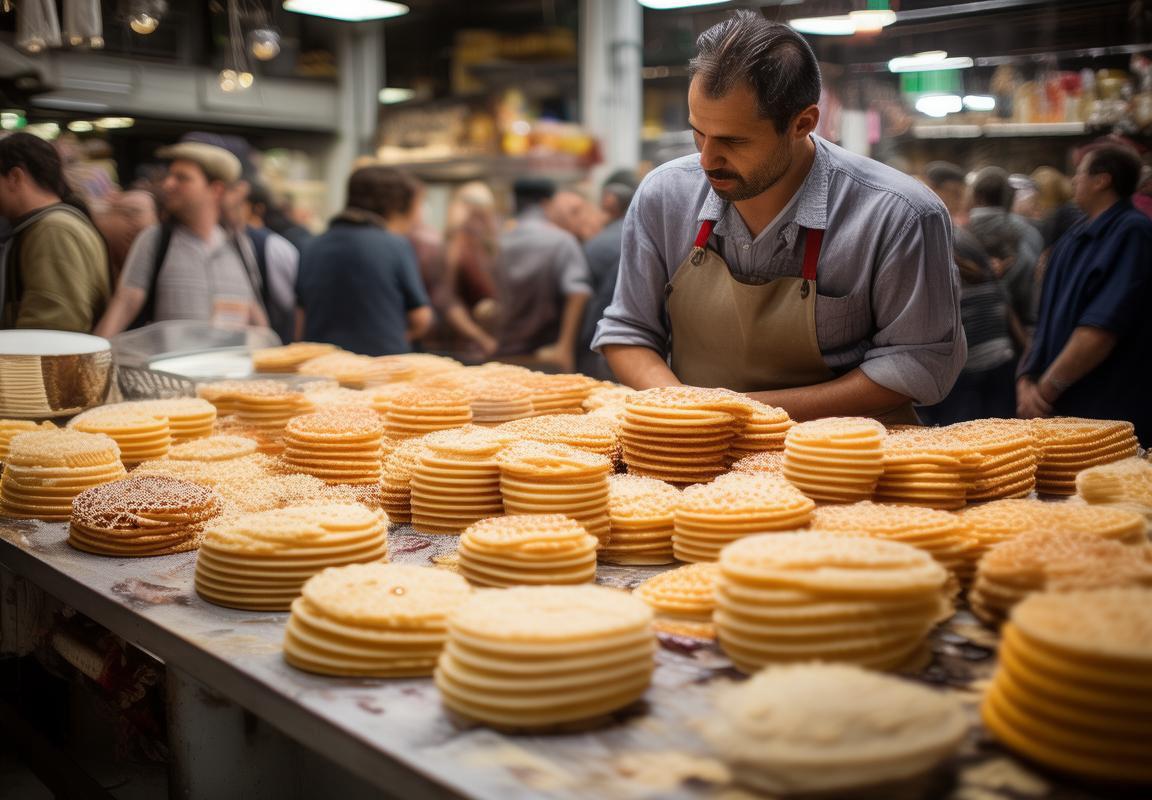
Case Studies: Success Stories in Gaufrier OEM
In the world of Gaufrier OEM (Original Equipment Manufacturer), there are several success stories that showcase the potential and achievements of companies in this niche market. Here’s a look into some of these remarkable tales:
-
Innovation Through Customization: One such success story involves a small, family-owned Gaufrier OEM that focused on customization. By partnering with a global bakery chain, they tailored the design of their gaufriers to meet specific production needs, ultimately securing a long-term contract.
-
Sustainability Meets Gaufrier: A company that integrated sustainable materials into their gaufrier manufacturing process saw a surge in demand from eco-conscious consumers and businesses. Their commitment to reducing carbon footprints helped them gain a significant market share in the European market.
-
Cross-Channel Marketing Triumph: A Gaufrier OEM that embraced a multi-channel sales strategy experienced remarkable growth. By leveraging social media, e-commerce, and traditional retail partnerships, they were able to reach a broader audience and increase brand awareness.
-
Collaboration with Local Bakeries: A Gaufrier OEM in the United States partnered with local bakeries to understand their unique needs. By providing specialized training and support, the OEM helped these bakeries improve their production processes, leading to increased sales and customer loyalty.
-
Global Expansion through Strategic Partnerships: A Gaufrier OEM that sought to expand its reach internationally formed strategic partnerships with local distributors in key markets. These partnerships allowed the company to adapt its products to local tastes and regulations, leading to successful market penetration in various regions.
-
Quality Control and Reliability: A Gaufrier OEM that made a name for itself by prioritizing quality control and reliability saw its products become the go-to choice for high-end bakeries. Their dedication to producing durable and efficient gaufriers resulted in long-lasting relationships with clients.
-
Embracing Digital Transformation: A Gaufrier OEM that embraced digital transformation by integrating IoT (Internet of Things) technology into their products saw a significant increase in sales. Their smart gaufriers provided real-time data analytics, allowing customers to optimize their production processes and reduce downtime.
-
Community Engagement: A Gaufrier OEM that engaged with the local community by participating in charity events and educational programs experienced a positive brand image boost. This community involvement helped the company build trust and recognition, leading to increased sales and customer loyalty.
-
Agile Manufacturing and Quick Response: A Gaufrier OEM that focused on agile manufacturing and quick response times to customer orders found success in a highly competitive market. Their ability to adapt to changing demands and deliver products swiftly helped them secure contracts with numerous clients.
-
Innovative Financing Solutions: A Gaufrier OEM that offered innovative financing solutions to small and medium-sized bakeries saw a rise in sales. By providing flexible payment options and leasing programs, the company made their products more accessible to a wider range of customers.
These success stories in Gaufrier OEM demonstrate the importance of innovation, customer focus, strategic partnerships, and adaptability in a dynamic market. From customization to sustainability, and from global expansion to community engagement, these companies have found unique ways to stand out and thrive in the Gaufrier OEM landscape.
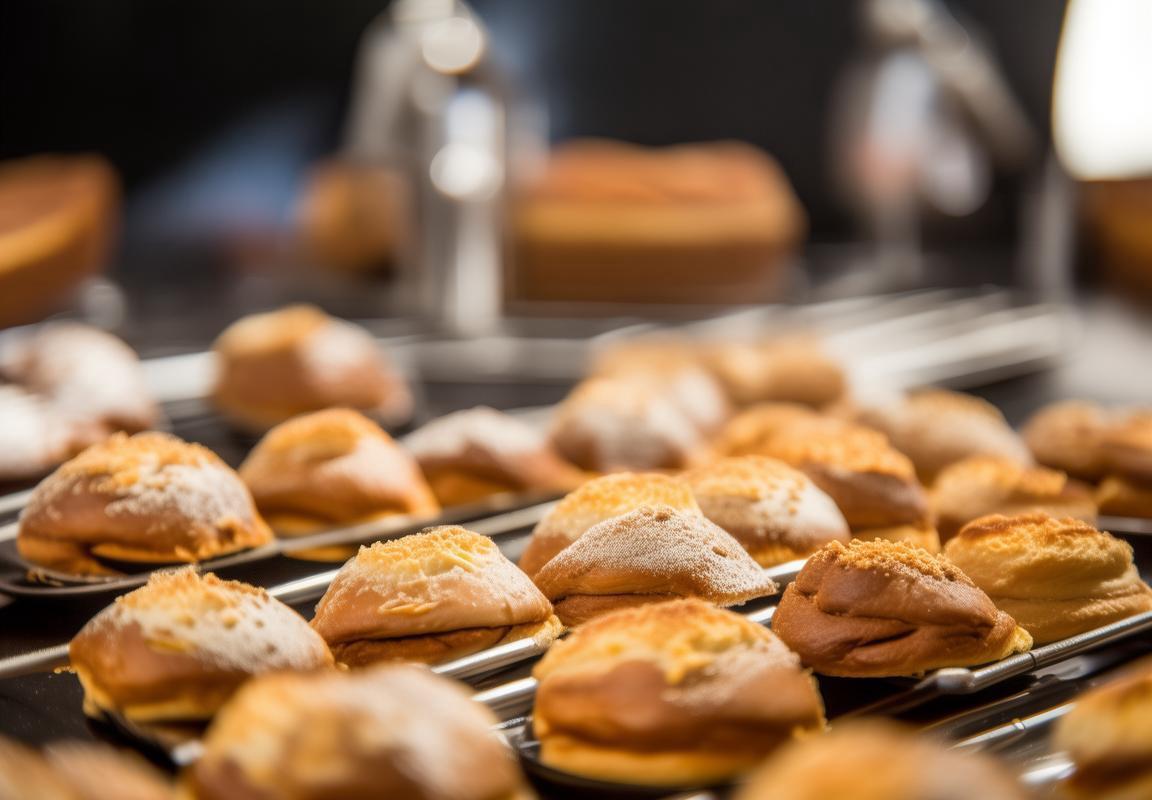
Future Outlook and Predictions
The market for professional gaufriers is poised for significant growth, driven by a combination of evolving consumer tastes, technological innovations, and shifting demographic patterns. As we look ahead, several key trends are emerging that will shape the future of this industry.
-
Integration of Smart TechnologySmart features are becoming increasingly popular in the professional gaufrier market. Expect to see a surge in models that offer connectivity, allowing users to monitor and control their devices remotely via smartphones or tablets. This integration of smart technology will not only enhance user convenience but also open up new possibilities for data analytics and predictive maintenance.
-
Sustainability and Eco-Friendly DesignsWith growing environmental concerns, there’s a trend towards sustainable and eco-friendly appliances. Professional gaufrier manufacturers are likely to focus on energy-efficient designs, recyclable materials, and manufacturing processes that minimize their carbon footprint. This shift is expected to become a key differentiator in the market.
-
Customization and PersonalizationThe demand for customization and personalization is on the rise. Consumers are looking for appliances that can cater to their specific needs and preferences. This could lead to a market where gaufriers come in various sizes, shapes, and functionalities, allowing users to tailor their machines to their specific use cases.
-
Expansion into New MarketsAs the professional gaufrier market matures in established regions like Europe and America, there is a significant opportunity for expansion into emerging markets. Countries with growing middle classes and a rising interest in Western-style culinary experiences are potential targets for manufacturers looking to diversify their customer base.
-
Health and Wellness FocusThe health and wellness trend is influencing the appliance market, and professional gaufriers are no exception. There’s a growing interest in healthier eating habits, which could lead to the development of gaufriers that offer healthier options, such as gluten-free or low-sugar recipes.
-
Collaboration with Foodservice IndustryThe foodservice industry is a major consumer of professional gaufriers. As this sector continues to evolve, there will be opportunities for manufacturers to collaborate closely with foodservice providers to develop specialized gaufriers that meet the unique demands of different types of establishments, from cafes to hotels.
-
Regulatory Compliance and Safety StandardsRegulatory compliance and safety standards are crucial in the appliance industry. As new regulations are introduced, manufacturers will need to ensure their products meet these requirements. This could lead to the development of new technologies and materials that enhance safety and reduce the risk of recalls.
-
Increased Focus on User ExperienceThe user experience is becoming a central focus for appliance manufacturers. This includes everything from intuitive interfaces to easy-to-clean designs. Companies that invest in improving the user experience are likely to gain a competitive edge.
-
Global Supply Chain ConsiderationsThe global supply chain is complex and subject to volatility. Manufacturers will need to navigate challenges such as trade disputes, raw material scarcity, and supply chain disruptions. Those that can adapt and innovate in this area will be better positioned to manage risks and maintain profitability.
-
Economic FactorsEconomic conditions play a significant role in consumer spending. As the global economy fluctuates, manufacturers will need to monitor these factors closely to anticipate changes in demand and adjust their strategies accordingly.
The future of the professional gaufrier market is bright, with numerous opportunities for growth and innovation. By staying attuned to these trends and preparing for the challenges ahead, manufacturers can position themselves to thrive in an ever-evolving industry.